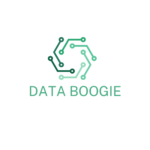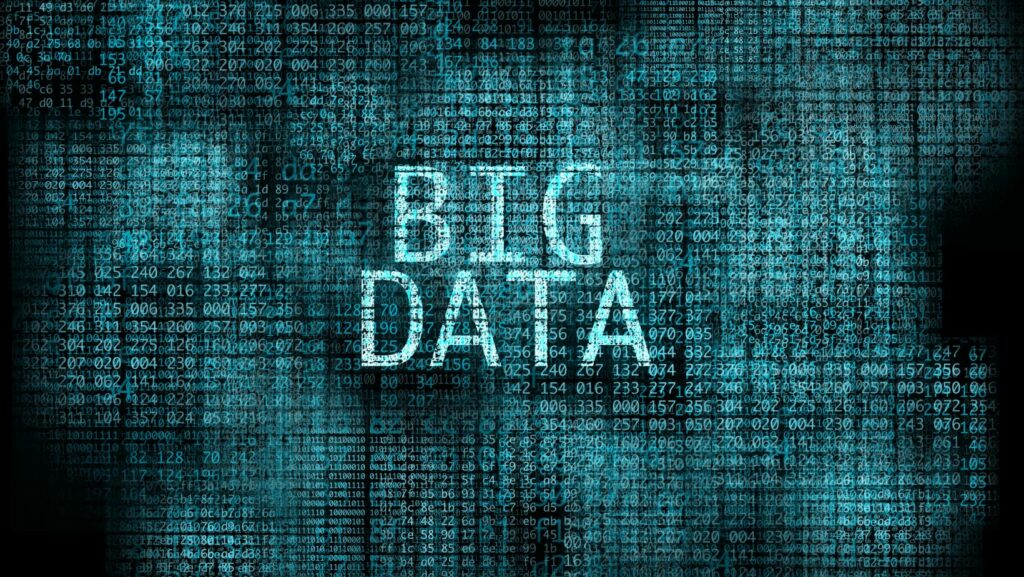Data Science and Big Data Analytics
- Understanding Data Science: Data science involves the collection, analysis, and interpretation of complex datasets to generate actionable insights, integrating statistics, computer science, and domain expertise.
- Big Data Analytics Overview: Big data analytics utilizes advanced techniques to analyze large volumes of data from diverse sources, including natural language processing and distributed computing, to uncover hidden patterns and insights.
- Importance of Data Techniques: Effective data collection, processing, and integration methods are crucial for ensuring data quality and enabling organizations to derive meaningful insights that drive strategic decisions.
- Real-World Applications: Industries such as healthcare, finance, retail, and manufacturing leverage big data analytics to enhance operational efficiency, improve customer experiences, and make informed decisions.
- Challenges: Organizations face challenges like data privacy concerns and a skills gap in the workforce, necessitating robust security measures and training initiatives to harness the full potential of data-driven insights.
- Future Trends: Key trends such as AI integration, real-time data processing, and augmented analytics will shape the future of data science and analytics, enhancing decision-making and competitive advantage for organizations.
In today’s digital age, data is more than just numbers; it’s a powerful asset driving decision-making and innovation. Data science and big data analytics have emerged as vital fields, enabling organizations to extract meaningful insights from vast amounts of information. With the ability to analyze patterns and trends, these disciplines empower businesses to make informed choices and stay ahead of the competition.
As companies continue to generate and collect data at unprecedented rates, understanding the principles of data science and the intricacies of big data analytics becomes essential. From predictive modeling to machine learning, these tools offer a roadmap for transforming raw data into strategic advantages. Embracing this knowledge can unlock new opportunities and enhance operational efficiency across various industries.
Overview of Data Science and Big Data Analytics
 Data science encompasses the collection, analysis, and interpretation of complex datasets to generate actionable insights. It integrates various fields such as statistics, computer science, and domain expertise, enabling organizations to make data-driven decisions. Professionals in data science utilize techniques like data mining, predictive analytics, and machine learning to identify patterns and trends.
Data science encompasses the collection, analysis, and interpretation of complex datasets to generate actionable insights. It integrates various fields such as statistics, computer science, and domain expertise, enabling organizations to make data-driven decisions. Professionals in data science utilize techniques like data mining, predictive analytics, and machine learning to identify patterns and trends.
Big data analytics refers to the methods used to analyze vast amounts of data generated from diverse sources like social media, sensors, and transaction records. Techniques in big data analytics include natural language processing, anomaly detection, and distributed computing frameworks such as Hadoop and Spark. These tools help organizations uncover hidden correlations and gain deeper insights from their data.
The combination of data science and big data analytics transforms how organizations operate. Businesses can optimize processes, personalize customer experiences, and enhance product development by leveraging these technologies. As data volumes grow, mastering both fields becomes increasingly vital for maintaining a competitive edge in the market.
Key Concepts in Data Science
Data science encompasses essential concepts critical to transforming raw data into meaningful insights. Understanding the following key areas enhances proficiency in the field.
Data Collection Techniques
Data collection techniques serve as foundational practices in data science. Common methods include:
- Surveys: Structured questionnaires gather quantitative and qualitative data from targeted demographics.
- Sensors: IoT devices capture real-time data from various environmental and operational contexts.
- Web Scraping: Automated tools extract data from websites, enabling large-scale information gathering.
- APIs: Application programming interfaces facilitate data retrieval from external sources in a structured format.
- Transactional Data: Business operations generate valuable datasets through sales, inventory, and customer interactions.
Each technique plays a vital role in ensuring the quality and relevancy of the collected data.
Data Processing Methods
Data processing methods transform raw data into analyzable formats. Key methods include:
- Data Cleaning: The removal of inconsistencies, duplicates, and errors ensures accuracy and reliability.
- Data Transformation: Normalization or standardization modifies data to eliminate biases and improve comparability.
- Data Aggregation: Summarizing data allows for easier interpretation and analysis across larger datasets.
- Data Integration: Combining datasets from different sources creates a unified view, essential for comprehensive analysis.
- ETL Processes: Extract, Transform, Load (ETL) processes streamline data workflows, from collection to storage in databases.
Mastering these processing methods is necessary for deriving actionable insights that inform strategic decision-making.
Importance of Big Data Analytics
Big data analytics plays a critical role in the modern business landscape, enabling organizations to make informed decisions based on vast amounts of data. Utilizing advanced analytical techniques helps uncover patterns, trends, and insights that drive success.
Real-World Applications
- Healthcare: Big data analytics supports improved patient outcomes by mining health records, predicting disease outbreaks, and optimizing treatment plans through personalized medicine.
- Finance: Financial institutions utilize analytics for fraud detection, risk management, and market trend analysis, allowing for more strategic investment decisions.
- Retail: Retailers employ analytics to enhance customer experiences by personalizing recommendations, managing inventory levels, and maximizing supply chain efficiency.
- Manufacturing: Industries analyze production data to optimize processes, reduce downtime, and predict equipment failures through predictive maintenance.
- Telecommunications: Companies use analytics to analyze call data records, improve customer service, and identify market opportunities.
- Enhanced Decision-Making: Leveraging data insights leads to informed and timely decisions, fostering a data-driven culture.
- Operational Efficiency: Process optimization reduces costs and streamlines operations, improving overall productivity.
- Customer Insights: Detailed analysis of customer behavior allows businesses to tailor products and services, boosting satisfaction and loyalty.
- Competitive Advantage: Businesses using big data analytics gain insights that competitors may overlook, allowing them to act proactively in the market.
- Innovation: Continuous analysis of market trends sparks innovation by identifying newly emerging opportunities and shifting consumer demands.
Challenges in Data Science and Big Data Analytics
Data science and big data analytics present unique challenges that can hinder effective implementation. Addressing these obstacles is essential for organizations striving to harness the full potential of data-driven insights.
Data Privacy Concerns
Data privacy concerns arise from the vast amounts of personal and sensitive information collected during data analysis. Organizations must comply with regulations like GDPR and CCPA, which demand transparency and consent regarding data usage. The potential for data breaches adds to these concerns, as unauthorized access can result in significant financial and reputational damage. Companies must invest in robust security measures such as encryption, anonymization, and secure access controls to safeguard sensitive data.
Skills Gap in the Workforce
A skills gap in the workforce poses another significant challenge in data science and big data analytics. The demand for skilled professionals in areas such as machine learning, statistical analysis, and data visualization continues to outpace supply. Educational institutions often struggle to keep curricula aligned with industry demands, resulting in a shortage of professionals equipped with the necessary expertise. Organizations must implement training programs and partnerships with educational institutions to cultivate talent, ensuring a workforce capable of navigating complex data landscapes efficiently.
Future Trends in Data Science and Big Data Analytics
Advancements in data science and big data analytics continually shape business strategies and technology. Several key trends are emerging that will significantly impact these fields.
impact these fields.
- Artificial Intelligence Integration
Artificial intelligence (AI) increasingly integrates with data science techniques, enhancing predictive analytics and decision-making processes. AI algorithms automate data analysis, allowing organizations to extract insights faster and with greater accuracy.
- Real-Time Data Processing
Real-time data processing becomes a crucial capability. Organizations prioritize immediate insights from data streams using technologies like Apache Kafka and stream processing frameworks. This approach supports quicker responses to market changes and customer behaviors.
- Automated Machine Learning (AutoML)
Automated machine learning simplifies the model-building process, allowing non-experts to harness data science. AutoML tools streamline the development cycle, enabling users to create predictive models without extensive coding knowledge.
- Augmented Analytics
Augmented analytics utilizes advanced technologies like natural language processing to empower data analysts and business users. By automating data preparation and insight generation, this trend democratizes data access across organizations.
- Focus on Data Governance and Ethics
Data governance and ethical considerations gain prominence as organizations prioritize data privacy and compliance. Transparency in data usage and robust governance frameworks ensure adherence to regulations like GDPR and CCPA while fostering trust.
- Edge Computing
Edge computing enables data processing closer to the source of data generation. This trend reduces latency and bandwidth use, supporting applications that require instant data analysis, especially in IoT environments.
- Enhanced Data Visualization Techniques
Advanced visualization tools and techniques (e.g., augmented reality, virtual reality) improve data presentation and insights’ clarity. Organizations invest in tools that transform complex data sets into intuitive visual formats, aiding decision-making.
- Collaboration Between Data Scientists and Business Stakeholders
Increased collaboration enhances alignment between data science teams and business stakeholders. This synergy ensures data strategies resonate with organizational objectives, resulting in more effective implementations of analytics.
Adopting these trends enables organizations to stay competitive in the rapidly evolving landscape of data science and big data analytics.
Data science and big data analytics are reshaping how organizations operate in today’s fast-paced digital world. By harnessing the power of data, businesses can uncover valuable insights that drive innovation and enhance decision-making processes. The ability to analyze vast datasets not only improves operational efficiency but also creates personalized customer experiences that foster loyalty. As technology continues to evolve, the integration of AI and real-time data processing will further revolutionize these fields. Organizations that prioritize mastering data science and big data analytics will be well-positioned to thrive amidst growing competition. Embracing these disciplines is essential for navigating the complexities of the modern business landscape and achieving sustainable success.



